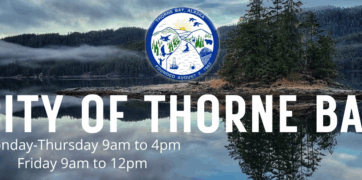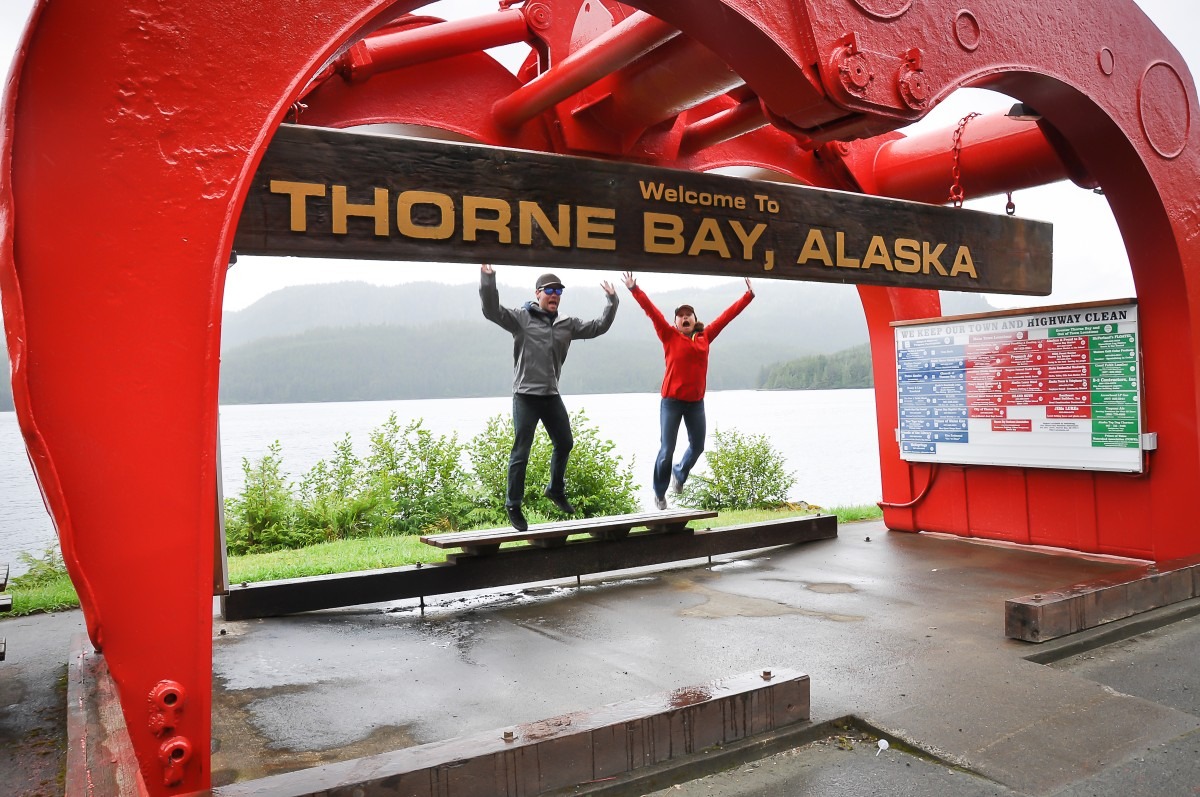Thorne Bay, Alaska
Our Story
Thorne Bay is on the eastern shore of Prince of Wales Island. It rests on gentle hills overlooking its namesake bay, where Alaska Natives hunted and fished for centuries.
Ketchikan Pulp Co. brought their floating logging camp to shore here from Hollis in 1961, when timber was still the leading sector of the island’s economy. The “new economy” boasts a number of visitor services, as indicated by the icons shown here. K through 12 schools provide education while a U.S. Forest Service ranger district office and the field office for Southeast Road Builders provide employment for families in the area. Thorne Bay is linked to the rest of the Island by the state Scenic Byways. Thorne Bay can also be accessed via several floatplane services and private boats.
Visitors entering on the main road find a unique welcome sign plaza housed in “The Claw”—the world’s largest log-handling grapple. Thorne Bay was home for the world’s largest logging camps in the 1960s. In 1982, a State of Alaska land sale program gave residents the opportunity to incorporate their city. Fishing, beachcombing, clamming and hiking are close by in the bay and up the Thorne River. Thorne Bay is also the access point for the popular USFS-maintained Eagles Nest Campground as well as the Balls Lake and Sandy Beach picnic areas. An archeologically significant 5,360-year-old spruce root basket—”The Thorne River Basket”—was found in the estuary of the Thorne River in 1998 and is preserved in the Alaska State Museum in Juneau.
Accommodations in Thorne Bay, Alaska
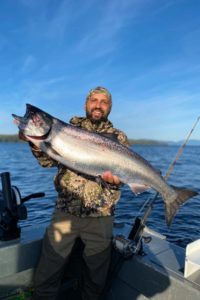
Visit Website
Adventure Alaska Southeast, LLC
Packages including: cottages, boats, vehicles, saltwater charters, or guided stream fishing. Our facilities include: tackle store, hot tub, freezers, canoes, laundry, and more. Serving POW for over 20 years.
Visit Website
Anderson Lodge Alaska/Tackle Shack
Experience Alaska with a personal touch! All-inclusive Charter & Self-guided packages for every season in our newly remodeled lodge in Thorne Bay. Call for details and custom packages.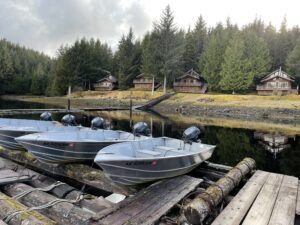
Visit Website
McFarlands Lodge
Beautiful waterfront lodge style cabins that offer vehicle, boat, fishing and crabbing gear rentals. Experience all that Prince of Wales has to offer with a DIY adventure at McFarlands Lodge.
Visit Website
South Haven Guest House
Best view on the bay. Private waterfront two-bedroom, furnished guest house with woodstove and Satellite Internet & TV. Includes skiff, vehicle, and ocean rods for your self-guided Southeast experience. Also listed in Lodges and Resorts.Hiking Near Thorne Bay, Alaska
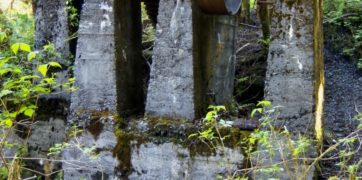
More difficult
Salt Chuck Trail
This trail follows closely the banks of Ellen Creek for much of the duration. It passes the historic site of the old Salt Chuck mine with extensive ruins which include a number of shacks, a collapsed refinery, a home, a barge, and numerous pieces of machinery. The collapsed buildings are in extremely hazardous condition, so […]

Easy
Big Lake Fish Pass
Located near Thorne Bay off of Sandy Beach Road, this short trail takes visitors to see the fish pass.
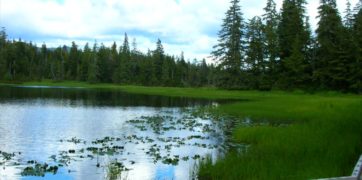
More difficult
Balls Lake Trail
Balls Lake near the center of the island may have waterfowl in the lake. The forest provides cover and food for black-tailed deer and black bears. Bald eagles are seen all year. Balls Lake is near milepost 16 on Thorne Bay Road heading west. A flat 4-mile trail loops the lake.
Upcoming Events in Thorne Bay, Alaska
